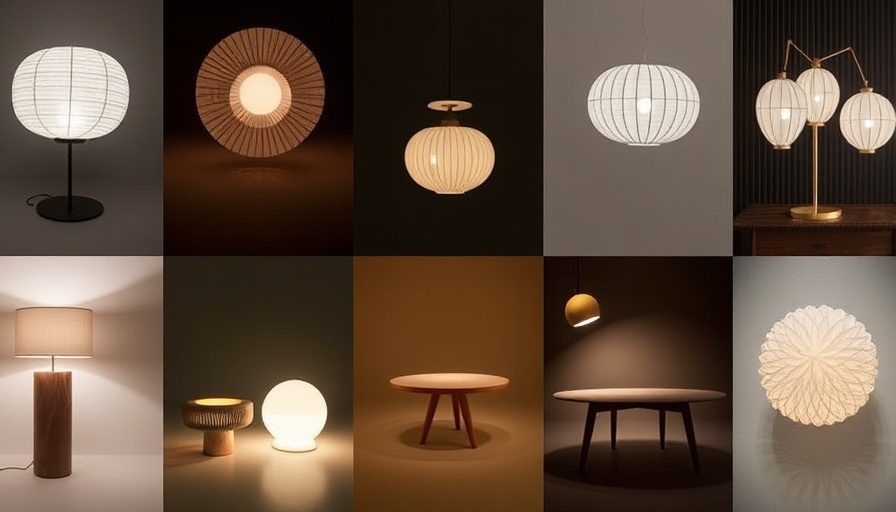
Elevating Remote Workspaces: Innovations from Milan Design Week 2025
Milan Design Week 2025 showcased a treasure trove of innovations aimed at enhancing the remote work experience. This year's exhibition not only underscored the importance of aesthetic appeal in home workspaces but also spotlighted ergonomic functionality—an essential blend for today's digital nomads.
Introducing Cutting-Edge Furnishings
The furniture and lighting pieces debuted at the event embody modern design principles that cater specifically to the evolving needs of remote workers. Among the most notable releases was the eFloat Quattro desk by Humanscale. This sit-stand desk features a sleek aesthetic, designed to seamlessly fit into home environments while providing crucial health benefits. Its adjustable height encourages movement, promoting circulation and reducing back pain, which is essential for anyone spending hours working at home.
Modular Design for Endless Possibilities
Another highlight was the Map modular lighting system by Geckeler Michels for Lodes. This innovative design utilizes conductive tape to connect LED modules, allowing users to customize their lighting arrangements. This flexibility not only enhances the visual appeal of any workspace but also ensures it can be tailored for optimal task lighting—crucial for productivity. Good lighting mitigates strain on the eyes, creating a more comfortable working environment.
Style Meets Functionality: The Serenity Sky Shower
While primarily designed for bathrooms, the Serenity Sky shower by Dornbracht exemplifies how wellness features can interlink with workspace productivity. Offering multiple flow modes, this installation aims to transform the bathing experience into a therapeutic retreat. For remote workers, taking mindful breaks can boost focus and creativity, making this shower a reminder of the importance of holistic health in a workspace.
Workshop-Inspired Tables: A Nod to Creativity
Piero Lissoni's Tablo table for Porro brings inspiration from metal workshops into domestic settings. Its sturdy design not only serves a functional purpose for meetings or dining but also adds a creative touch to home offices. By integrating such thoughtfully designed furniture, remote workers can cultivate environments that inspire, enhance collaboration during video calls, and generate new ideas.
Revolutionizing Materials: The Titanio Collection
Gessi's introduction of the Titanio material aims to push the boundaries of bathroom hardware. Deriving its strength from titanium, this new material offers durability in designs that stand the test of time. While primarily aimed at bathroom fittings, its principles can inspire the choice of resilient materials across home offices, promoting longevity and minimizing waste.
Encouraging a Health-Conscious Work Environment
As digital nomads navigate the challenge of maintaining a work-life balance, integrating wellness-oriented designs becomes paramount. Products like Ross Gardam's Aeris chandelier not only illuminate workspaces but elevate mood and ambiance. Natural light is crucial for productivity; thus lighting design that mimics natural sources can significantly influence well-being.
From stylish desks tailored for functionality to innovative lighting that fosters creativity, the trends from Milan Design Week 2025 provide a roadmap for digital nomads looking to enhance their remote workspaces. Understanding and implementing these design principles can lead to improved comfort and productivity in home offices.
Call to Action: Embrace Ergonomic Design Today!
Considering a workspace makeover? Implement the innovations showcased at Milan Design Week 2025 into your home office to promote comfort and efficiency, paving the way for enhanced productivity. Start exploring ergonomic furniture options to create a workspace that truly caters to your needs!
 Add Row
Add Row  Add
Add 




Write A Comment